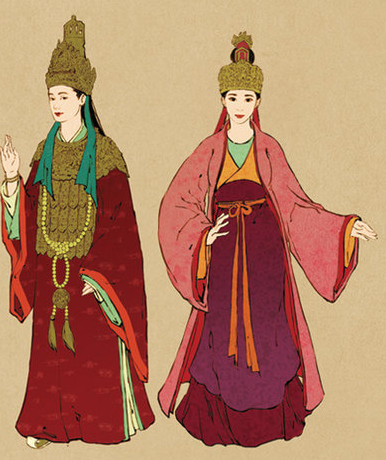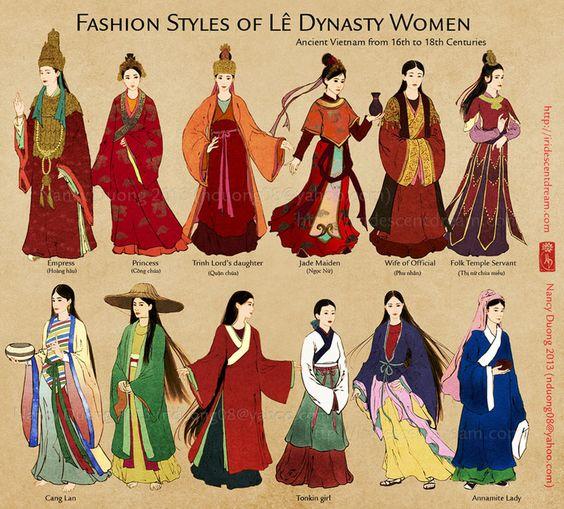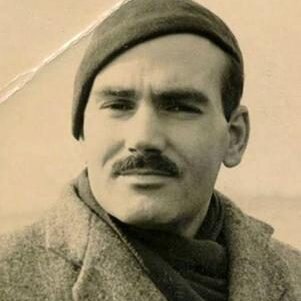‘1620’, A Cautionary Tale
by Michael Vickery
The rivalry between Cambodia and Siam during the 17th century.

Publication: Michael Arthur Aung-Thwin & Kenneth R. Hall, eds., New Perspectives on the History and Historiography of Southeast Asia, Continuing Explorations (London: Routledge, 2011), pp. 157-166.
Published: 2011
Author: Michael Vickery
Pages: 11
Language : English
pdf 245.4 KB
Diverging from prevalent historical approaches, such as David P. Chandler´s thesis, the author presents a much more balanced ratio of power between Cambodian and Siamese rulers from 1593 – 4, when the Ayuthya forces invaded the Lovek kingdom, and a more nuanced picture of the respective Siamese and Vietnamese influences in Cambodia at that time.
For instance, “Cambodia offered an alternative to Siam for the procurement of sapppanwood and deer hide, both in great demand on the Japanese market, and thanks to its convenient and regular traffic with Guangnam [Nguyên Viet Nam] it could provide Vietnamese silk which was highly valued in Japan”, notes the author; “thus, far from isolating Cambodia, the Nguyên contact in mid- and late 17th century was of commercial benefit for Cambodia, and may have been instrumental for maintaining Cambodia’s relatively high position among Southeast Asian ports.”
He adds: “We see some of the confusion in modern scholarship about the events of the 1620s. But what were the basic facts? Cambodia had quickly recovered from an Ayutthayan invasion of Lovek in 1593 – 94, which itself was perhaps conflict over domination of maritime relations with China and Japan. Prince Suriyopear/soriyopoa/(sūryavarma) returned to Cambdia with Thai support in 1601⁄1602. He was king until he abdicated in 1618 for his son Jay Jettha. The capital was in Udong. Suriyopear was successful in reuniting Cambodia and making it a prosperous and strong kingdom.”
This latter Cambodian king married a Vietnamese princess under these circumstances: “Vietnam was divided into two kingdoms after 1570, the Trịnh in the North and the Nguyê˜n in the South, and they were at war from about 1620 to 1670. Contact between Cambodia and Vietnam (South Vietnam of the Nguyên) began between 1613 and 1620, just when the two Vietnamese kingdoms began their war. The first official contact was a request from Vietnam for war elephants from Cambodia to fight against the Trịnh in the North. In exchange the Nguyên king sent a Vietnamese princess to marry the Cambodian King Jay Jettha.”

Vietnamese Female Costumes in the 17th century (Nancy Duong, 2013)
Tags: Siam, Vietnam, royal chronicles, Khmer dynasties
About the Author

Michael Vickery
Michael Vickery (1 April 1931, Billings, Montana, USA — 29 June 2017, Battambang, Cambodia) was an American historian and lecturer whose novel approach to Ancient Cambodia breathed life into Khmer studies from the 1960s onwards. First as a young English teacher in the provinces of Cambodia, later as an independent researcher with a profound knowledge of the country, its language and popular culture, he combined groundbreaking insights on the so-called ‘Indianization’ of ancient kingdoms with an empathetic yet independent-minded interest in the tribulations and achievements of post-war Cambodia.
In his preface to Cambodia: 1975 – 1982 (1984), he summarized the process by which he became an unassuming expert in Cambodian affairs:
I first arrived in Cambodia in July 1960 to begin work as an English language teacher in local high schools under one of the U.S. government aid programs to that country. In that capacity I spent nearly four years in Cambodia, the first two in Kompong Thorn, then a year in Siemreap, and a fourth academic year in Phnom Penh, cut short in March 1964 as a result of Sihanouk’s termination of all U.S. aid projects. During that time I acquired fluency in Khmer, began studying, through examination of old newspaper files and conversations with friends, the post-1945 political history of Cambodia, and decided to make the country the main focus of academic research which I intended to undertake.
In March 1964 I was transferred to a similar position in Vientiane, Laos, where I remained for three more years and during which I was able to make regular extended visits to Cambodia. Then, after spending three years (1967−70) at Yale University, I returned to Cambodia in late 1970 for nearly two years of dissertation research there and in Thailand; and except for one more brief visit in 1974 I was then cut off from direct contact with the country until 1981, when I was able to travel there for three weeks.
Although my original interest in Cambodia was in the contemporary period, I kept pushing further back into the country’s history until I produced a dissertation and other writings on the 14th-16th centuries, something which occupied most of my research time from 1970 through 1977; and after 1973 I virtually ceased collecting or organizing material on the contemporary situation. The turn taken by the revolution after April 1975 surprised me as it did nearly everyone else, but I found the first wave of atrocity stories over the next year suspect and felt that given the squalid record of our own country in Indochina, Americans who could not view the new developments with at least qualified optimism should shut up.
His doctoral thesis research, conducted in Cambodia, Thailand and Malaysia from 1970 to 1977, was titled Cambodia After Angkor: The Chronicular Evidence for the Fourteenth to Sixteenth Centuries (Yale University). Expanding his research to the pre-Angkorian period, Michael Vickery became a leading force in challenging the orthodox views on the ‘Indianization’ of Southeast Asia, focusing on the Mon-Khmer substrate in linguistics, religious beliefs and social patterns. In 2000, he didn’t shy away from calling George Coedès’ outlook on Cambodian ancient history “obsolete”.
Known for his liberal views, he was always eager to comment on the current affairs of modern Cambodia, contributing columns for the Phnom Penh Post from 1992 to 2007. He also taught Ancient History at the Royal University of Fine Arts (RUFA) in Phnom Penh. He also took numerous photographs of daily life in Cambodia which refect his profound empathy with the people and the land.
Publications
[Note: M.V.‘s journalistic works and most of his book reviews are not listed here.]
- [unpublished] “The Nogai Diplomatic Correspondence with Moscow”, Yale University, 1969.
- “Thai Regional Elites and the Reforms of King Chulalongkorn.” Journal of Asian Studies 29 – 4, 1970: 863 – 881.
- “The ‘Kalpana’ documents in a review of three collections of Thai historical documents”, Journal of Siam Society (JSS) 60⁄1, 1972, pp. 397 – 410.
- “The Khmer Inscriptions of Tenasserim: A Reinterpretation”, JSS 61, January 1973: 51 – 70.
- “A Note on the Date of the Traibhūmikathā”, JSS 62 – 2, July 1974: 275 – 284.
- “The Lion Prince and Related Remarks on Northern History”, JSS 64 – 1, Jan. 1976: 326 – 377.
- “Looking Back at Cambodia”, Westerly (University of Western Australia) 4, Dec. 1976.
- “The 2/k.125 Fragment, a Lost Chronicle of Ayutthaya”, JSS 65 – 1, Jan. 1977: 1 – 80.
- Cambodia after Angkor, the Chronicular Evidence for the Fourteenth to Sixteenth Centuries, Ph.D. Yale University, Dec. 1977 [Ann Arbor: University of Michigan, University Microfilms].
- “A Guide Through Some Recent Sukhothai Historiography”, JSS 66 – 2, July 1978: 182 – 246.
- “A New Tāµnān About Ayudhya”, JSS 67 – 2, July 1979:123 – 86.
- “The Composition and Transmission of the Ayudhya and Cambodia Chronicles”, in Anthony Reid and David Marr (eds.) Perceptions of the Past in Southeast Asia, ASAA Southeast Asia Publications Series, 1979, pp. 130 – 154.
- “A New Tâmnàn About Ayudhya”, JSS 67⁄2, 1979, pp. 123 – 186.
- “Looking Back at Cambodia [1945 – 1974]”, in Ben Kiernan and Chantou Boua (eds.), Peasants and Politics in Kampuchea 1942 – 1981, London, Zed Press, 1982, pp. 89 – 113.
- “Democratic Kampuchea: CIA to the Rescue”, Bulletin of Concerned Asian Scholars 14⁄4, 1982: 45 – 54.
- “L’Inscription K 1006 du Phnom Kulen”, BEFEO 71, 1982: 77 – 86.
- “Qui était Na/Nong, savant(s) cambodgien(s) des XVIII/XIX siècles?”, Cambodge I, ASEMI (Asie du sud-est et monde insulindien), Vol. XIII 1 – 4, 1982: 81 – 86.
- [with Serge Thion] “Cambodge: Quelques problèmes de la reconstruction”, Cambodge I, ASEMI vol. XIII/1 – 4, Paris, 1982: 395 – 420.
- “Democratic Kampuchea, Themes and Variations”, in David P. Chandler and Ben Kiernan (eds.), Revolution and its Aftermath in Kampuchea: Eight Essay, New Haven, Monograph Series No. 25, Yale University Southeast Asia Studies, 1983, pp. 99 – 135.
- “Prolegomena to Methods for Using the Ayutthayan Laws as Historical Source Material”, JSS 72, 1984: 37 – 58.
- [unpublished] “Comparisons of Revolution and Non-Revolution in Asia”, Conference of the Asian Studies Association of Australia, Adelaide, 13 – 18 May 1984.
- Cambodia 1975 – 1982, Boston, South End Press/Sydney, George Allen & Unwin, 1984, 357 p ; 2d ed.: Chiang Mai, Silkworm Books, 1999.
- “The Reign of Sūryavarman I and Royal Factionalism at Angkor”, Journal of Southeast Asian Studies (JSAS) 16⁄2, Sept. 1985, 226 – 244.
- “Some Remarks on Early State Formation in Cambodia”, In Southeast Asia in the 9th to 14th Centuries, ed. by David G. Marr and A. C. Milner, Canberra/Singapore, Australian National University (Research School of Pacific Studies)/Institute of Southeast Asian Studies, 1986, pp. 95 – 115.
- Kampuchea, Politics, Economics and Society, London/Boulder, Frances Pinter Publishers/Lynne Rienner Publishers, 1986.
- “Cambodia’s Tenuous Progress”, Indochina Issues 63, January 1986, Center for International Policy, Indochina Project, Washington, D.C.
- “Some New Evidence for the Cultural History of Central Thailand”, The Siam Society’s Newsletter 2⁄3, Sept. 1986: 4 – 6.
- “From Lamphun to Inscription No. 2”, The Siam Society Newsletter 3⁄1, March 1987: 2 – 6.
- “Criminal Law in the Peoples Republic of Kampuchea”, Journal of Contemporary Asia 17⁄4, 1987: 508 – 518.
- “Review of K. R. Hall, Maritime Trade and State Development in Early Southeast Asia”, JSS 1987, pp. 211 – 213.
- “Refugee Politics: The Khmer Camp System in Thailand”, in David A. Ablin and Marlowe Hood (eds.), The Cambodian Agony, M.E. Sharpe, Inc., New York, 1988: 293 – 331.
- “A Critique of the Lawyers Committee for International Human Rights, Kampuchea Mission of November 1984”, Journal of Contemporary Asia vol. 18, No. 1, 1988, pp. 108 – 116.
- “How Many Died in Pol Pot’s Kampuchea”, Correspondence, Bulletin of Concerned Asian Scholars 20⁄1, 1988: 70 – 73.
- “Cambodia 1988”, ASIEN (German Association for Asian Studies, Hamburg) 28, July 1988: 1 – 19.
- “Cambodia (Kampuchea): History, Tragedy, and Uncertain Future”, Bulletin of Concerned Asian Scholars 21÷2−4, April-Dec. 1989: 35 – 58.
- “La kremlinologie face au Cambodge” (tr. by M.-Cl. Orieux), Affaires cambodgiennes 1979 – 1989, Paris, L’Harmattan, 1989: 129 – 35.
- “Loan Words and Devoicing in Khmer”, Mon-Khmer Studies XVIII-XIX, 1989 – 1990: 240 – 250.
- “Notes on the Political Economy of the Peoples Republic of Kampuchea (PRK)”, Journal of Contemporary Asia 20⁄4, 1990: 435 – 465.
- “Cambodian Political Economy, 1975 – 1990”, Cultural Survival Quarterly 14⁄3, 1990: 23 – 27.
- “The Old City of ‘Chaliang’-‘Srī Satchanalai’-‘Sawankhalok’, a Problem in History and Historiography”, JSS 78⁄2, 1990: 15 – 29.
- “Cultural Survival in Language and Literature in Cambodia Today”, Cultural Survival Quarterly 14⁄3, 1990: 49 – 52.
- “Comments on Cham Population Figures”, Bulletin of Concerned Asian Scholars 22⁄1, Jan.-Mar. 1990: 31 – 33.
- “The Rule of Law in Cambodia”, Cultural Survival Quarterly 14⁄3, 1990: 82 – 83.
- “Cambodia”, in Douglas Allen and Ngo Vinh Long, eds., Coming to Terms, Indochina, the United States and the War, Westview Press, Boulder, Colorado, 1991, pp. 89 – 128.
- “Cambodia: November-December 1990”, Journal of Contemporary Asia 21⁄2, 1991: 274 – 282.
- “Cambodia: November-December 1990”, Thai-Yunnan Project Newsletter 12, Department of Anthropology, Research School of Pacific Studies, Australian National University, March 1991.
- “The Ram Khamhaeng Inscription, A Piltdown Skull of Southeast Asian History?”, in The Ram Khamhaeng Controversy, Collected Papers, ed. by James R. Chamberlain, Bangkok, The Siam Society, 1991, pp. 3 – 52.
- “Piltdown Skull – Installment 2”, in The Ram Khamhaeng Controversy, Collected Papers, ed. by James R. Chamberlain, Bangkok, The Siam Society, 1991, pp. 333 – 418.
- “The Campaign Against Cambodia: 1990 – 1991”, Indochina Issues 93, August 1991.
- “On Traibhūmikathā”, JSS 79⁄2, 1991: 24 – 36.
- “The Cambodian Economy: Where Has it Come From, Where is it Going?”, in Indochina Economic Reconstruction and International Cooperation, edited by Tsutomu Murano and Ikuo Takeuchi, Tokyo, Institute of Developing Economies, 1992, pp. 47 – 62.
- “The Cold War and Cambodia”, Journal of Oriental Studies 30, Centre of Asian Studies, University of Hong Kong, 1992: 87 – 118.
- “Evidence for Prehistoric Austronesian-Khmer Contact and Linguistic Borrowing”, Mon-Khmer Studies XXI, 1992: 185 – 89.
- “A ‘Modern’ Number Term in Old Khmer”, Mon-Khmer Studies XXI, 1992: 191 – 3.
- “Cambodia”, in Joel Krieger, ed., The Oxford Companion to Politics of the World, New York-Oxford, Oxford University Press, 1993: 106 – 07.
- [unpublished] “Borders of Cambodia”, Conference on “Southeast Asian Borders in Regional Context”, Australian National University, Canberra, October 1993.
- “Where and What was Chenla?”, in Recherches nouvelles sur le Cambodge, dir. F. Bizot, Paris, EFEO (Études thématiques I), 1994: 197 – 212.
- “Cambodia: a Political Survey”, Discussion Paper No. 14, The Department of Political and Social Change, Research School of Pacific Studies, Australian National University, Canberra, 1994.
- “The Cambodian People’s Party: Where Has it Come From, Where is it Going?”, Southeast Asian Affairs 1994. Singapore. Institute of Southeast Asian Studies. 1994: 102 – 17.
- “Human Rights in Cambodia”, with Naomi Roht-Arriaza, in Impunity and Human Rights in International Law and Practice, ed. by Naomi Roht-Arriaza. New York/Oxford, Oxford University Press, 1995, chapt. 18, pp. 243 – 251.
- “Piltdown 3: Further Discussion of the Ram Khamhaeng Inscription”, JSS 83, 1995: 103 – 198.
- “The Constitution of Ayutthaya”, in Thai Law: Buddhist Law, Essays on the Legal History of Thnailand, Laos and Burma, ed. by Andrew Huxley, Bangkok: White Orchid Press, 1996: 133 – 210.
- “Democracy and Human Rights in Cambodia”, Michael Vickery and Ramses Amer, Phnom Penh, Penang, and Stockholm 1996
- [review of David P. Chandler and Ian Mabbett, The Khmers], “What to do About The Khmers”, Journal of Southeast Asian Studies (JSAS) 27 – 2, Sept. 1996: 389 – 404.
- Society, Economies, and Politics in Pre-Angkor Cambodia: the 7th-8th Centuries, Tokyo, Centre for East Asian Cultural Studies for Unesco/The Toyo Bunko, 1998.
- “The Khmer Inscriptions of Roluos (Preah Ko and Lolei): Documents from a Transitional Period in Cambodian History”, Seksa Khmer n. s. 1, 1999, pp. 47 – 93.
- “Kambodscha”. Chapter 13 in Südost Asien Handbuch. Herausgegeben von Bernhard Dahm und Roderich Ptak. München, Verlag C.H. Beck, 1999: 251 – 262.
- ‘Coedès’ Histories of Cambodia’, in Colloque George Coedès aujourd’hui, Bangkok, CEDREFT, 9 – 10 Sept. 1999. | printed as “Coedès’ Histories of Cambodia”, Silpakorn University International Journal 1⁄1, January-June 2000: 61 – 108.
- “Resolving the Chronology and History of 9th-Century Cambodia”, Siksacakr 3, CKS Siemreap, July 2001: 17 – 23.
- “Two Historical Records of the Kingdom of Vientiane”, in Christopher E. Goscha and Sören Ivarsson (eds.), Contesting Visions of the Lao Past Lao Historiography at the Crossroads, Copenhagen, NIAS Press, 2003.
- “Funan Reviewed: Deconstructing the Ancients”, Bulletin de l’Ecole française d’Extrême-Orient (BEFEO) 90 – 91, 2003 – 2004: 101 – 143.
- ‘Cambodia and its Neighbors in the 15th Century’, Singapore, Asia Research Institute Working Paper Series No. 27, 2004, 73 p.
- Four articles in Southeast Asia: A Historical Encyclopedia, from Angkor Wat to East Timor, ed. by Dr. Keat Gin Ooi, ABC-Clio, 2004, 1856 p. ISBN13 978 – 1576077702.
- [communication draft] “A legend concerning Jayavarman II”, first presented at EFEO Paris in September 2004, since revised.
- ‘Champa revised’, Asia Research Institute Working Paper Series No. 37, March 2005, 89 p.
- “Histoire du Champa”, in Trésors de l’Art du Vietnam: La Sculpture du Champa, Paris, Musée Guimet, 2005, pp. 23 – 35.
- [review on Karl-Heinz Golzio, Geschichte Kambodschas: Das Land der Khmer von Angkor bis zur Gegenwart, München: Verlag C.H. Beck 2003] “A Misstep toward a New History of Cambodia”, in Zeitschrift der Deutschen Morgenländischen Gesellschaft, Band 155, Heft 1, 2005: 239 – 251.
- “Introduction”, in Bayon: New Perpectives, ed. Joyce Clark, Bangkok, River Books, 2006, pp. 10 – 27.
- ‘Bayon: New Perspectives Reconsidered’, Udaya 7, 2006: 101 – 176.
- “Territorialmächte in der Prä-Angkor-Zeit Funan und Zhenla”, pp. 29 – 32; and “Geistliche und weltliche Macht”, pp. 91 – 92, in Angkor Göttliches Erbe Kambodschas, Prestel Verlag Gmbh + Co, 2006. ISBN13 978 – 3791336978.
- “L’inscription thaï du Phnom Kulên K 1006”, in Yoshiaki Ishizawa, Claude Jacques, Khin Sok, Manuel d’épigraphie du Cambodge, Vol. 1, EFEO, Paris, 2007, pp. 155 – 167.
- Cambodia: A Political Survey, Phnom Penh, Funan Press, 2007, 202 p. ISBN 978−99950−57−09−1.
- “A Short History of Champa”, in Champa and the Archaeology of Mỹ So’n (Vietnam), Andrew Hardy, Mauro Cucarzi, and Patrizia Zolese, editors, Singapore, NUS Press, 2009, pp. 45 – 60.
- Kicking the Vietnam Syndrome in Cambodia, collected writings 1975 – 2010, published online, 2010.
- “Cambodia and its Neighbors in the 15th Century”, in Geoff Wade & Sun Laichen, eds., Southeast Asia in the Fifteenth Century, The China Factor, Singapore, NUS Press, National University o Singapore, 2010, pp.271 – 306.
- ‘“1620”, A Cautionary Tale,’ in Michael Arthur Aung-Thwin & Kenneth R. Hall (eds.), New Perspectives on the History and Historiography of Southeast Asia, Continuing Explorations, London, Routledge, 2011: 57 – 166.
- [about an essay by Dr. Karl-Heinz Golzio] “Resolving the Chronology and History of 9th-Century Cambodia”, Siksācakr 3, July 2001: 17 – 23.
- [posth., ed. and pres. by Jean-Michel Filippi, ENG/FR] A History and Historiography of Angkor — Une histoire et une historiographie d’Angkor, Paris, Maisonneuve & Larose/Hemisphères, 2024, 396 p. ISBN: 9782377011919.

